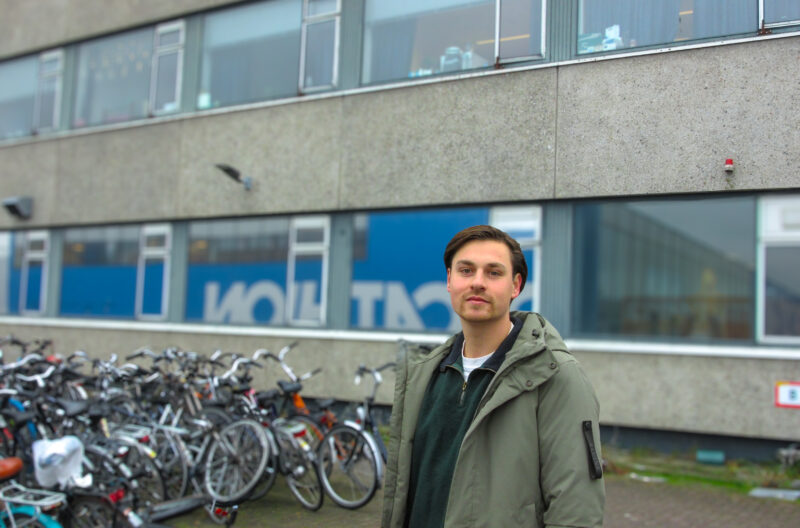
Noah found out how to find housing for asylum seekers, but all his work was in vain
Noah spent months investigating asylum accommodation and developing a strategy to help municipalities manage asylum housing needs. Recent Dutch policies have left him frustrated.
In June 2023, the asylum seeker centre in Ter Apel reached its maximum capacity of 160 beds, leading to dire conditions. People, including children, found themselves moved to sports halls, where they had to sit on chairs in crowded waiting rooms before finally being sent to emergency shelters. For some, there was no space at all, leaving them with no choice but to sleep in tents or out in the open.
Noah Albus, a recent Real Estate graduate, decided to investigate how municipalities could provide proper housing for asylum seekers. ‘I wanted to focus on the social side of real estate and help municipalities create safe, adequate housing for people in need’, he says.
Noah did interviews all over the country, from Dronten to Rotterdam
When Noah started his thesis project, the so-called Spreidingswet (literally: Spreading Law), set to take effect in February 2024, required all municipalities to house asylum seekers proportionally based on their population size. ‘I saw this as an opportunity to make a difference. For example, a city like Amsterdam, with a population of around 920,000, would need to host more asylum seekers than a smaller city like Groningen with 230,000 residents. The law could help prevent overcrowding, and I wanted to help municipalities implement it.’
He did his thesis project for a real estate consultancy, conducting research and interviews with council members and policymakers from Dronten to Rotterdam and Utrecht. He also spoke with Eric van der Burg, at the time Minister for Detention and Protection, who drafted the bill for the Spreidingswet. ‘Van der Burg’s vision was clear. He wanted every municipality to actively provide housing, anticipating a rise in the number of asylum seekers.’
Noah discovered that there isn’t an absolute shortage of buildings
The most surprising finding for Noah was how minimal the conditions in many shelters are. ‘People sometimes only have a bed and share overcrowded spaces. It’s a really tough situation, especially for kids.’
He also discovered that there isn’t an absolute shortage of buildings that could be used for asylum housing. The real difficulty is gaining municipal approval and adapting facilities to meet standards. Moreover, competition for available housing in cities is already high as students and other residents struggle for space. ‘It’s hard to find locations at short notice. Space is limited, and it takes time to create adequate asylum housing.’
Now, his months-long work may be in vain. He created a detailed long-term strategy for municipalities to implement changes, but with the recent withdrawal of the Spreidingswet, his recommendations may not be relevant anymore. ‘I’m frustrated that my findings no longer serve a purpose’, he says. ‘With this law, we could have made space and improved housing quality for asylum seekers. Without it, obstinate municipalities are able to engage minimally, and as a result of that facilities will remain overcrowded.’
I saw the Spreidingswet as a long-term solution
Asylum applications in the Netherlands have surged from 17,590 in 2020 to nearly 48,500 in 2023. The housing challenge extends beyond new arrivals. Roughly 16,000 asylum seekers with residency permits remain in temporary shelters, unable to move to permanent housing due to a lack of options. So these people occupy beds for new arrivals. ‘Ideally, my research could have been a guide for municipalities. I saw the law as a long-term solution. If it were applied for six to ten years, I think we could have created enough places of good quality.’
Noah’s thesis was nominated for the Hannie Schaft Award, which recognises students who have made a significant social impact. Although he didn’t scoop the award, he is motivated to continue exploring the social value of real estate.
‘What I like about real estate is that I can contribute to improving housing policies. Many people think real estate is only about buildings, but it’s about a lot more than that. It has a direct impact on people and communities.’